The Scope and Purpose of a Home Inspection
Purchasing property involves risk
The purpose of a home inspection is to help reduce the risk associated with the purchase of a structure by providing a professional opinion about the overall condition of the structure. A home inspection is a limited visual inspection, and it cannot eliminate this risk. Some homes present more risks than others. We cannot control this, but we try to help educate you about what we don’t know during the inspection process. This is more difficult to convey in a report and one of many reasons why we recommend you attend the inspection.
A home inspection is not an insurance policy.
This report does not substitute for or serve as a warranty or guarantee. Home warranties can be purchased separately from insuring firms that provide this service.
A home inspection is visual and not destructive.
The descriptions and observations in this report are based on a visual inspection of the structure. We inspect the aspects of the structure that can be viewed without dismantling, damaging, or disfiguring the structure and without moving furniture and interior furnishings. Areas that are concealed, hidden, or inaccessible to view are not covered by this inspection. Some systems cannot be tested during this inspection as testing risks damaging the building. For example, overflow drains on bathtubs are generally not tested because if they were found to be leaking, they could damage the finishes below. Our procedures involve non-invasive investigation and non-destructive testing, which will limit the scope of the inspection.
This is not an inspection for code compliance.
This inspection and report are not intended for city / local code compliance. During the construction, process structures are inspected for code compliance by municipal inspectors. Framing is open at this time, and conditions can be fully viewed. Framing is not open during inspections of finished homes, limiting the inspection. All houses fall out of code compliance shortly after they are built, as the codes continually change. National codes are augmented at least every three years for all disciplines. Municipalities can adopt and phase in sections of the codes on their timetables. There are generally no requirements to bring older homes into compliance unless substantial renovation is being done.
This is just our opinion.
Construction techniques and standards vary. There is no one way to build a house or install a system in a house. The observations in this report are the opinions of the home inspector. Other inspectors and contractors are likely to have some differing opinions. You are welcome to seek opinions from other professionals.
The scope of this inspection
This inspection will include the following systems: exterior, roof, structure, drainage, foundation, attic, interior, plumbing, electrical, and heating. The evaluation will be based on limited observations that are primarily visual and non-invasive. This inspection and report are not intended to be technically exhaustive.
Your expectations
The overall goal of a home inspection is to help ensure that your expectations are appropriate for the house you are proposing to buy. To this end, we assist with the discovery by showing and documenting observations during the home inspection. This should not be mistaken for a technically exhaustive inspection designed to uncover every defect in a building. Such inspections are available, but they are generally cost-prohibitive to most homebuyers.
Your participation is requested.
Your presence is requested during this inspection. A written report will not substitute for all the possible information that can be conveyed verbally by a shared visual observation of the conditions of the property.
How to Read This Report
Getting the Information to You
This report is designed to deliver important and technical information in a way that is easy for anyone to access and understand. If you are in a hurry, you can take a quick look at our "Summary Page” and quickly get the critical information for important decision-making. However, we strongly recommend that you take the time to read the full Report, which includes digital photographs, captions, diagrams, descriptions, videos, and hot links to additional information.
The best way to get the layers of information presented in this report is to read your report online, which will allow you to expand your learning about your house. You will notice some words or series of words highlighted in blue and underlined – clicking on these will provide you with additional information.
This report can also be printed to a PDF file and printed on paper as desired.
Chapters and Sections
This report is divided into chapters that parcel the home into logical inspection components. Each chapter is broken into sections that relate to a specific system or component of the home. You can navigate between chapters with the click of a button on the left-side margin.
Most sections will contain some descriptive information in black font. Observation narrative, done in colored boxes, will be included if a system or component is found to be significantly deficient in some way or if we wish to provide helpful additional information about the system or the scope of our inspection. If a system or component of the home was deemed to be in satisfactory or serviceable condition, there might be no narrative observation comments in that section, and it may simply say “tested” or “inspected.”
Observation Labels
All narrative observations are colored, numbered, and labeled to help you find, refer to, and understand the severity of the observation. Observation colors and labels used in this report are:
- Major Concern:Repair items that may cost significant money to correct now or in the near future, or items that require immediate attention to prevent additional damage or eliminate safety hazards.
- Incomplete:Items that have not been completed.
- Repair:Repair and maintenance items noted during inspection. Please note that some repair items can be expensive to correct such as re-finishing hardwood floors, but are considered simply repair items due to their cosmetic nature.
- Recommended Maintenance:These are repair items that should be considered "routine home ownership items," such as servicing the furnace, cleaning the gutters or changing the air filters in the furnace.
- Due Diligence:Observation such as a buried oil tank that may require further investigation to determine the severity and / or urgency of repair.
- Recommended Disclosure Items:These are observations for which we recommend that sellers disclose more information to buyers so that buyers can better understand recent servicing, repairs or maintenance or even construction history or building and site design.
- Monitor:Items that should be watched to see if correction may be needed in the future.
- Improve or Upgrade:Observations that are not necessarily defects, but which could be improved for safety, efficiency, or reliability reasons. These are often items which reflect changes in building codes or standards.
- Inspection Notes:Aside information and /or comments elaborating on descriptions of systems in the home that the inspector might find useful to purchase decisions or home ownership. .
- Limitations:Conditions present at the time of inspection which limited the scope of this visual inspection
Summary Page
The Summary Page is designed as a bulleted overview of all the observations noted during the inspection. This helpful overview is not a substitute for reading the entire inspection report. The entire report must be read to get a complete understanding of this inspection report, as the Summary Page does not include photographs or photo captions.
Moisture Meter Testing
Where moisture meter testing is indicated in this report, a Protimiter Survey Master Dual Function was used.
Summary
Major Concerns
- I-3 Interior:
STAIR REPAIRS NEEDED
This building has a sequence of custom wood timbered stairs. These are unique spiral stairs that are beautiful but could use a round of repairs. There are a number of places where stair treads are coming loose and balusters are loose and or missing. Repair are important for safety. Examples of observations noted during inspection include:
- The guardrail system is incomplete for the exterior of spiral stairs on the south side - also noted treads are loose from missing balusters
- Exit holes in some of the exposed wood on the south side - holes may be original to the install, but treatment could be needed.
- One of the stair trades is cracked to the spiral stairs at the south side exterior
- Stair treads under repair - south side
- South side spiral stairs were under construction at the time of inspection
- Loose stair treads were noted in a number of locations
- Riser heights are not all within 3/8th of an inch - this is a modern safety standard that could be difficult to achieve with these stairs.
- Baluster missing on lower stairs
Recommendation
Hire qualified general contractor to further evaluate and repair all of the stair systems in this building to ensure safe and reliable performance.
✒️ - Please note there are a few installation issues with these stairs that may be difficult to correct to comply with modern safety standards. For example the stairs are lacking a proper graspable handrail that meets modern handrail profile requirements. There are also a number of treads with uneven riser heights. Future owners should use caution or consult with a qualified builder about options for repair as desired.
- CS-2 Crawl Space:
CRAWL SPACE CLEAN-UP NEEDED
Overall, numerous repairs are needed to the crawl space below this house. I have made a series of detailed observations in the base of this report but given the extent of repairs I recommend further evaluation of this crawl space by a licensed general contractor as additional repairs could be needed that are latent or concealed. Examples of specific observations noted during inspection include:
- Adjust the plastic vapor barrier material so all exposed earth is covered.
- Pipe insulation is incomplete in the crawl space - be sure all pipes are insulated
- Remove all wood debris from the crawl space to eliminate conditions conducive to wood destroying organisms
- Strip off/remove all form wood in the crawl space to eliminate a condition conducive to wood destroying organisms
- Ant frass was noted in the middle space. No ants were found. These look like from pavement ants. Clean and monitor.
- Sub-floor insulation is damaged and incomplete
- The south access hatch cover is missing and requires replacement.
Incomplete Items
- G-7 Grounds:
BEACH STAIRS NOTED
Evaluation of beach stairs is beyond the scope of this inspection. Beach stairs seldom conform to modern safety requirements and they are often constructed in challenging settings and exposed to the weather. This makes beach stairs a common area for safety and maintenance concerns. Several items were noted during a cursory visual inspection:
- The stair treads have openings larger than the required 4-inches between treads
- Riser heights are not even - they should be within 3/8th of each other
- The guard system is incomplete for the stairs
- The graspable handrail is not continuous.
Recommendation
Consult with a qualified genera contractor about options for improving beach stairs as desired for improved safety and reliability. I list as an incomplete item as I believe a railing system was scheduled for installation.
- G-8 Grounds:
A number of small repairs are underway to the stone retaining wall. Complete repairs as needed.
- G-9 Grounds:
WELL HOUSE
Carpentry repairs window to the exterior of the wellhouse. Complete carpentry repairs prior to listing.
- G-10 Grounds:
GRILLING OUTBUILDING
A weathered in building was noted at the NW corer of the property. This looks set up as an outdoor cooking area. The equipment here is beyond the scope of this inspection. I would disclose to a buyer more information about these systems. Also, it seems that posts are in the midst of being re-finished. Complete refinishing here as needed.
- DPB-1 Decks, Porches and Balconies:
COMPLETE REPAIRS AND UPDATES TO THE WEST DECK
This building has a large deck on the water side of the building. This is done with a combination of timber framing beams and pressure-treated floor joists with hardwood lumber for decking. The deck was in the middle of being repaired at the time of inspection. I noted a number of incomplete items; please see attached photos on the list below. I recommend hiring a qualified general contractor to further evaluate and complete repairs to this deck. Examples of specific items noted during the inspection include:
- The fascia board at the southwest corner of the water side deck is incomplete.
- New stairs to the water side deck where under construction at the time of inspection. Complete installing stairs as needed.
- There seems to be some temporary framing still installed below the water side deck. Complete deck repairs and remove temporary framing as needed.
- Incomplete stairs noted on the north side of the water deck.
- A number of loose decking boards for noted at the waterside deck. Secure as needed.
- I-2 Interior:
DRYWALL AND FINISH
A number of small wall repairs are needed on the interior where finishes are incomplete:
- A small area of drywall finishing is incomplete above the main bath shower
- The wall to log finishes leave exposed openings in he laundry
- Basement finishes are incomplete behind the bar
- Incomplete finishes noted on the south door to the upper balcony
Recommendation
Complete cosmetic sheetrock and finish repairs prior to listing as needed.
- I-6 Interior:
The loft spaces are missing the ladder systems. Install as needed.
- NB-1 North Bathroom:
SHOWER STALL PACKAGE
The built in shower system installation is incomplete in the family bathroom. This seemed to be generally operational. I did not operate all of the fittings - it is not feasible unless you get into the shower. I did run the shower for a few minutes.
Recommendation
Have the shower further evaluated and installation completed by a qualified plumber.
- MB-1 Main Bathroom:
COMPLETE INSTALLING NEW MAIN BATH SINKS
The main bath sinks are old and close to the end of their useful service lives. Apparently, these are scheduled for replacement. Update bath sinks and other systems as needed.
- GB-1 Guest Bathroom:
The guest bathroom is in the midst of a renovation. Complete remodel work here as needed.
Repairs
- G-3 Grounds:
The catch basins are clogged with organic debris and require cleaning to ensure reliable performance of the drainage system.
- G-6 Grounds:
One of the stone yard stairs is out of position by the spa this could be a trip hazard. Repair as needed.
- DPB-2 Decks, Porches and Balconies:
LOOSE GUARDRAIL - EAST BALCONY
The guardrail system for the east side balcony is loose. Secure as is feasible.
- DG-1 Detached Garage :
WIRING CLEANUP REPAIRS - DETACHED GARAGE
The detached garage could use around of wiring cleanup repairs. Examples of observations noted during inspection include:
- An open electrical junction box was noted in the garage storage room at the west side
- Missing cover plate for the light switch in the garage storage room
- Numerous open electrical junction boxes were noted in the garage. Cover as needed.
- Abandoned wiring noted in the ceiling of the garage at the east side
- An open neutral was noted on the west wall
- ES-6 Electric Service:
MILD CORROSION NOTED INSIDE THE WELL HOUSE PANEL
Mild corrosion was noted to several of the circuits inside the sub panel for the wellhouse. This is often caused when chlorine is stored near by an electric panel. I also noted several open cover plates in the wellhouse as well as a dead rodent in the light switch. Implement rodent control work and wiring cleanup work for the well house. I would have the panel further investigated by the license electrical contractor and terminations repaired as deemed necessary.
- EDF-1 Electric Distribution and Finish:
WIRING REPAIRS NEEDED - HOUSE
Overall, numerous repairs are needed to the wiring system. There is a long list here but most of these are small simple items. Examples of specific observations noted during inspection include:
- Missing cover plates in the well house - also note the dead rodent
- Open wiring was noted on the east side of the garage. This looks to be for a light fixture. Complete installing a light as needed.
- Electrical cover plates are missing in the laundry room
- The cover for the light fixture is missing in the laundry room
- Can light trims incomplete in the kitchen ceiling.
- Missing electrical cover place not even in the powder bathroom
- The lighting fixture in the main bedroom closet is incomplete. It seems to be missing a cover
- Missing GFCI cover plate - main bath
- The fan in the main bath is missing its cover
- A light fixture is missing is covered in the upstairs south bedroom closet
- I did not find controls for these ceiling fan and light on the south side bedroom
- A loose receptacle was noted below the electric panels and the basement
- Open wiring was noted in the basement and several locations
- Open wiring and junction boxes loaded down in the movie theater room
- Missing electrical cover plates all over the basement
- The ceiling fan in the southeast bedroom did not respond to testing - I would make sure all ceiling fans and lights are operating prior to listing.
- I did not find controls for the upper chandeliers in the south hallway
Recommendation
Hire a licensed electrical contractor to further evaluate and repair these items as needed. Please also see other items in the electrical chapters of this report.
✒️
- Whenever this many items are noted with the wiring system, it is possible that additional repairs could be needed that are latent or concealed.
- EDF-2 Electric Distribution and Finish:
ABANDONDED WIRING NOTED IN A NUMBER OF PLACES
Abandoned wiring was noted on the exterior of the building - see below the back deck. This should be eliminated or properly terminated inside a listed junction box. This was tested with a non-contact voltage pen and appeared to be energized. though this method of testing is unreliable and the circuit may not be energized. For optimal safety, all abandoned wires should be eliminated or properly terminated inside a junction box. During ins[ection I noted:
- EDF-5 Electric Distribution and Finish:
NO CARBON MONOXIDE ALARMS FOUND
The installation of carbon monoxide alarms is recommended for all homes that have fuel-burning appliances such as gas or oil furnaces, gas water heaters, gas ovens and cook-tops, gas fireplaces, and wood stoves. Carbon monoxide is a colorless, odorless gas that can cause sickness, nausea, and even death. For more information, consult the Consumer Product Safety Commission at 1-800-638-2772 (C.P.S.C.) Modern standards in many states now recommend one CO alarm outside of all bedrooms and at least 1 per floor of the house.
- EDF-6 Electric Distribution and Finish:
A number of smoke alarms are missing. Repair / replace the missing smoke alarms in the house so that there is an operating smoke alarm in every bedroom and on every floor and one outside of all sleeping areas.
- HCFV-7 Heating, Cooling, Fireplaces and Ventilation:
GAS LOG FIREPLACE SHUT DOWN
The gas log fireplace has been shut down and was not responding to normal operating controls. I recommend making this unit operational prior to listing the house.
- P-6 Plumbing:
Replace the missing handle to the hose bib on the north side of the building.
- WH-2 Water Heaters:
WATER HEATER SEISMIC RESTRAINTS
Install listed seismic straps to restrain the water heater in the event of an earthquake; none were noted during inspection. Two straps should be located on the water heater: one on upper 1/3rd of tank and one at the lower 1/3rd.
- I-1 Interior:
CRACKED FLOOR TILES NOTED
Several cracked tiles were noted in the floor during inspection - see the kitchen. Have these cracked tiles replaced by a tile specialist. Please note that cracked tile can be an indication of poor tile preparation and additional cracking could continue. In this case I suspect it is from the log framing / construction of the building. As logs shrink it is common for some sections to go out of level.
✒️ - I did not find loose tile. These are likely not worth correcting at this time.
- I-7 Interior:
DOOR REPAIRS NEEDED
A number of tune up repairs ae needed for the doors in this building. Examples of observations noted during inspection include:
- Adjust the hallway closet doors on the south side second floor
- The door to the southeast bedroom is not latching and requires adjustment
- Complete installing the doors to the north bedroom
Recommendation
Hire a qualified general contactor to further evaluate and repair/adjust interior doors as needed for reliable performance.
- K-1 Kitchen:
The kitchen sink faucet handle is leaking and needs to be repaired or replaced.
- K-2 Kitchen:
POOR WATER FLOW AT KITCHEN SINK
Poor functional flow was noted at the kitchen sink faucet. This could be from localized restrictions in the aerator or angle stops of faucet or could be indicative of a larger supply piping problem. Have this further investigated and repaired as needed by a licensed plumber.
- K-5 Kitchen:
INOPERATIVE COOKTOP FAN
The kitchen cooktop fan is inoperative and requires repair or replacement. This is important to provide reliable ventilation for the kitchen. Have this fan repaired or replaced as needed by a qualified general contractor.
- RPWDO-1 Rodents, Pests and Wood Destroying Organisms:
CARPENTER ANTS FOUND - SOUTH SIDE EXTERIOR
Active carpenter ant activity was noted outside the house at the time of inspection - I found one ant at the south side. No visible damage from carpenter ants was noted during inspection, but concealed damage is always possible with carpenter ants. Carpenter ants are apart of the natural ecosystem, and it is not uncommon to find them around the property. Finding ants outside does not necessarily mean they are in your house, but there is some risk. Options for correction include:
- Monitor. If you consistently see ants, a treatment may be needed and contact a pest control operator.
- Take preventative action and hire a pest control operator to further evaluate and treat this property as recommended.
Recommended Maintenance
- G-5 Grounds:
TREE AND VEGETATION PRUNING - NORTH SIDE
Pruning trees, branches and vegetation away from the building is recommended. Where trees, branches and large shrubs can provide rodent access to the roof, a minimum 6-foot clearance is recommended as many rodents can jump 6-feet. All vegetation, including smaller landscaping such as grasses, flowers and shrubs should be kept 1-foot off the house to eliminate contact which could trap moisture against the building.
- E-2 Exterior:
EXTERIOR LOG MAINTENNACE RECOMMENDED
A review of the logs during inspection showed a well-maintained exterior, but some maintenance will be needed in the near term. This is common. The exterior of logs should be well-maintained to prevent decay and insect damage, especially where logs are exposed to weather. Maintenance items noted during inspection include:
- Caulking to failure noted at the water side of the building
- Trim wood is missing an incomplete the water side deck door
- A dead carpenter ant was noted inside in this area.
- Exterior finishes are deteriorating in some exposed locations. This shows the water side deck door
- Minor cracks are developing in the sealant used to seal checks in sun-exposed logs - re-sealing will be needed soon.
- Stain failure noted in several places
- Exit holes noted in the logs on the south stairs and the entry posts. These may be old or even original.... difficult to determine
- Exit holes noted in the large log at the south side spiral stairs. He's look like carpenter aunt exit holes.
- Exterior doors need refinishing at the second floor balconies
Recommendation
Hire a qualified log home maintenance specialist to further evaluate and implement repairs / maintenance as recommended. Also, disclose to a new owner who has been used for maintenance and any products used for exterior maintenance. .
- RCG-1 Roof, Chimney and Gutters:
RECOMMENDED ROOFING MAINTENANCE
The roofing material on this building is a standing seem metal roof. These are often rated as 35-year roofing systems. In practice, service life depends a great deal on the quality of the roofing materiel, the quality of the installation, the steepness of the roof, roof roof design and the amount of exposure. Visual inspection today revealed the need for roof repairs to ensure reliable performance from this roof. I recommend additional inspection of this roof by a qualified roofing contractor. Repair as recommended. Examples of observations noted during inspection include:
- Clean organic debris off the garage roof
- Be sure to keep this drain clear at the base of the dead valley - north of the entry
- RCG-3 Roof, Chimney and Gutters:
CHIMNEY CLEANING AND INSPECTION IS RECOMMENDED
The NFPA (National Fire Protection Association) recommends an annual inspection of all chimneys, fireplaces, solid fuel-burning appliances, and vents. They also recommend an NFPA 211 Standard, Level II inspection upon sale or transfer of the property. A Level II inspection includes, not only cleaning the interior of the chimney pipe, but also the use of specialized tools and testing procedures such as video cameras, etc. to thoroughly evaluate the serviceability of the entire flue lining and fireplace/chimney system. Level II inspections are not always needed, especially for short simple flues that can be inspected visually after a cleaning. If a chimney cleaning has not been performed over the past 12 months, such an inspection is recommended before the home changes ownership---for fire safety reasons. Implement any repairs as recommended.
- RCG-4 Roof, Chimney and Gutters:
ROOF AND GUTTER CLEANING NEEDED
The gutters are clogged with organic debris and require cleaning to ensure proper control of roof runoff. Clean the gutters and ensure they are unobstructed, leak-free and properly sloped to drain. This is routine house maintenance; I would expect the need to clean gutters and downspouts regularly.
- ES-3 Electric Service:
INADEQUATE WORKING CLEARANCE FOR THE ELECTRIC PANEL
An inadequate working clearance was noted in front of the electric panel. This presents a potential safety hazard, especially for people working on or inspecting the electric panel. A 30-inch wide and 36-inch deep unobstructed working clearance is recommended for improved safety. Relocate cabinets and storage as needed to ensure safe and reliable access.
- The cover for the panel obstructs access to the right side panel. This limited my inspection as I could not remove those right side screws to access the panel. Adjust / remove this cover as needed.
- HCFV-1 Heating, Cooling, Fireplaces and Ventilation:
SERVICE THE PROPANE BOILER
Annual servicing is recommended for safe and reliable performance from this hot water boiler heating system. Records indicate that this boiler has not been serviced in the last year. The boiler was tested during inspection and was operational.
Recommendation
Hire a licensed heating contractor to service and further evaluate the boiler. I would disclose to a buyer any additional information about the installer and maintenance information. Examples of observations noted during the inspection include:
- HCFV-2 Heating, Cooling, Fireplaces and Ventilation:
WOOD FIRED BOILER
This building appears to have a second boiler system located at the South end of the property. This is a wood fired boiler. This looks like a neat system. I have never seen one. I did not light a fire to test the system. Visual inspection indicated fairly extensive creosote buildup inside.
Recommendation
I recommend having this wood fired boiler service as recommended by the manufacturer. Disclose to a new owner any information about how to operate and maintain this unique system.
- P-2 Plumbing:
The supply pipe insulation is incomplete in the crawl space. Be sure all supply lines in unheated spaces have been adequately insulated to protect from freezing conditions that could damage the pipes and to prevent heat loss.
- WH-3 Water Heaters:
WATER TESTED HOT
Testing of the plumbing system today, the water tested as too hot - 127 degrees F. This is a scald hazard. To prevent scalding, standards recommend indoor hot water temperatures do not exceed 120 degrees. There is some evidence that hot water temperatures should be greater than 130 degrees to prevent Legionnaires' disease from developing in the water heater. If this is a concern, you can heat the water in the tank to 140 degrees F and have a tempering valve installed at the hot water tank. Have this further evaluated and repaired by a licensed plumber, or simply turn down the temperature as desired to eliminate a scald hazard. Please note that during the inspection, it is difficult to accurately test the water temperature as it can vary between fixtures. Testing is done in multiple locations during the inspection, and a median temperature is taken.
- LF-3 Laundry Facilities:
CLEAN THE CLOTHES DRYER EXHAUST VENT
The dryer exhaust ductwork is dirty and needs to be cleaned for improved safety. This is important, regular maintenance to eliminate a potential fire hazard.
- The dryer exhaust vent on the south side of the building under the deck needs to be cleaned.
Due Diligence Items
- AP-2 Additional Plumbing:
FISH TANKS
This building has a sequence of built in fish tanks. These are beyond the scope of this inspection. These feel like an important part of the living room area at the moment.
Recommendation
Have the tanks serviced prior to listing and provide a new owner with any maintenance information.
Recommended Disclosure Items
- G-2 Grounds:
STEEP BANK ON SITE
A steep bank exists on this property. An evaluation of soil stability is beyond the scope of this inspection. I recommend disclosing any information you have about the soil conditions on this property and any soils engineering records if they exist. A buyer may wish to seek additional information about the soils here.
- G-4 Grounds:
A large drain pipe noted going down the hillside. Disclose to a buyer any site drainage information.
- DPB-3 Decks, Porches and Balconies:
DISCLOSE INFORMATION ABOUT THE EAST BALCONY MEMBRANE
This building has a deck finished with wood decking installed over a water-proof membrane. This is a tricky installation to inspect because the water proof membrane and drain paths for water are not visible below the finished surfaces. This type of decking system requires regular scheduled maintenance where the finished decking surfaces are lifted and selectively removed so the membrane and drain paths can be cleaned and inspected. Removing and re-installing finished decking surfaces is beyond the scope of this inspection, so inspection of this decking system was limited. Disclose any information about this system and any recent maintenance.
✒️ - note that most of this is covered by a nice roof system. The edges are exposed to the weather though.
- RCG-2 Roof, Chimney and Gutters:
WATER STAINS ON CHIMNEY
Water stains were noted on the chimney in the bedroom side of the chimney. These were dry at the time of inspection.
Recommendation
Disclose any history of leakage and repair here. Chimney to roof junctures are common locations for leaks and can require ongoing maintenance.
- EDF-4 Electric Distribution and Finish:
INQUIRE FURTHER ABOUT THE DETECTOR SYSTEM
This building has a smoke/heat detector system. Some of these can even be tied into a house security system. I do not test these systems. A critical part of the electric system tutorial is understanding this smoke detector system. Also, determine if these detectors also do carbon monoxide.
- HCFV-4 Heating, Cooling, Fireplaces and Ventilation:
RADIATORS
The building has a number of radiators in addition to the in-floor system.
Recommendation
Disclose any additional information about these. One thing that comes to mind is radiators generally run hotter (require hotter water) than in-floor systems. It was not clear of these are on a different leg?
- HCFV-6 Heating, Cooling, Fireplaces and Ventilation:
MECHANICAL VENTILATION
I did not find any provisions for automatic mechanical ventilation - typical for a building of this age. Disclose any information about ventilation systems here. There may be a system that I overlooked. Interior ventilation systems are often not that critical on larger houses such as these.
- P-1 Plumbing:
PRIVATE WELL
Water for this home appears to be supplied by a well system. Inspection of the well, water supply, and water quality are beyond the scope of this inspection. I recommend disclosing any additional information about the well. Well equipment: the pump and captive storage tank have limited service lives and often require updating on a 20-year schedule. There are other elements of a well system that should be evaluated as well, such as the well production, often tested in a draw-down test, water quality, and well depth.
- P-4 Plumbing:
ONSITE SEPTIC SYSTEM NOTED
This property appears to have a private on-site septic system based on visible components. These are specialty systems and are excluded from this inspection. Comments in this report related to this system are made as a courtesy only and are not meant to be a substitute for a full evaluation by a qualified specialist. Generally, septic tanks should be pumped and inspected every 3 years. Depending on the type of system and municipal regulations, inspection and maintenance may be required more frequently, often annually. I recommend:
- Disclosing any information about this system's maintenance and repair history
- Provide any documentation available for this system
- Provide inspection and maintenance requirements for this system
- Hire a qualified specialist to evaluate, perform maintenance and make repairs as needed
- AP-1 Additional Plumbing:
IRRIGATION NOTED
An exterior irrigation system was noted for this home. Sprinkler and irrigation systems are beyond the scope of this inspection. My own experience with irrigation systems is that they require annual attention/repair/servicing after every winter. Disclose any information about how to winterize this system as this should be done prior to cold weather. When testing the system, be sure sprinkler heads are adjusted so the system is not watering the side of the house. Hire a specialist to further evaluate this system as desired.
- AP-3 Additional Plumbing:
WATER FEATURES NOTED
This house has several water features installed. They were not operating at the time of inspection. Evaluation of water features is beyond the scope of this inspection. Water features often have filters, pumps and other components that require regular servicing, maintenance and cleaning. Water features can also pose a hazard for small children. Use caution of small children are around these water features. Remove or fence as deemed necessary for safety. Disclose any additional information about water features on the property.
- AP-4 Additional Plumbing:
SPA NOTED
The spa was off at the time of inspection. It looks as though there may be useful life in this appliance. Spas are beyond the scope of this inspection. Disclose any additional information if this unit is operational or if repairs are needed.
- I do not see an electrical disconnect for the spa - be sure there is a disconnect within sight of this spa
- I-5 Interior:
POST ADJUSTMENT CONTROLS
I noted a number of places where large timber posts are adjustable - see for example below the south spiral stairs.
- I-8 Interior:
SCREENING ROOM
A screening room was noted in the basement. Disclose toa buyer any special information about the equipment and needed maintenance for this system and room.
- MB-2 Main Bathroom:
WATER DAMAGE BELOW MAIN BATH SHOWER - TESTED DRY
Water damaged plywood and water stains were noted below the main bath shower. This tested dry at the time of inspection. I suspect this is from a prior leak/failure of the main bath shower. The shower looked newer.
Recommendation
Disclose any additional information about prior repairs.
Items for Monitoring
- WH-1 Water Heaters:
OLDER WATER HEATER
This water heater is likely close to the end of its useful service life. The average life of a water heater is statistically 8-12 years though in practice, they can vary widely between 8-20 years depending on water quality and maintenance schedule such as frequency of flushing the tank and replacing sacrificial anodes. Budget to replace this water heater at any time. Water was hot at the time of inspection.
✒
- These tanks used in conjunction with boiler systems can often last a lot longer than regular water heaters.
- K-3 Kitchen:
SINK DISPOSERS ARE NOT RECOMMENDED ON SEPTIC
Kitchen sink disposers are not recommended on septic systems. Refrain from using except for the items that get away from you. Here is a link for more information from the EPA about septic systems. Link to EPA guide.
Improve Or Upgrade Items
- ES-5 Electric Service:
NO SURGE PROTECTION FOUND
No surge protection was noted at the electrical equipment today. The 2020 edition of the National Electric Code requires type I or type 2 surge protection on new or renovated homes. Though not adopted yet this code change reflects the growing complexity of electric appliances in our houses and the growing risk of damage to electrical equipment due to internal or external electrical surges. This short video explains more about electrical surges and surge protection. I recommend upgrading and adding surge protection for improved protection of the electrical appliances in this building. I would do this in the context of other electrical repairs or upgrades.
- LF-2 Laundry Facilities:
MOISTURE ALARM RECOMMENDED
A moisture alarm with water shut-off features is recommended under the washing machine to protect against accidental leaks in the supply hoses. Pans can be effective when there is a drain, but even these will not protect against a burst supply connector. A moisture alarm with automatic shut-off will. Watts is a brand I have seen installed: Link.
📸 The Complete Report
Grounds
General Grounds Photos
Drainage and Site
Window and Stairwells
Driveways/Walkways/Flatwork
Grounds, Trees and Vegetation
Exterior Stairs
Beach Stairs
Retaining Walls
Fences
Outbuildings, Trellises, Storage Sheds, Barns
Decks, Porches and Balconies
Wood Decks Porches and Balconies
Concrete Decks, Stoops, Landings and Porches
Water-Resistant Decks and Balconies
Garage - Attached
Garage General
Garage Doors and Automatic Openers
Garage Floor
Garage Stairs
Vehicle Chargers
Detached Garage
Garage General
Garage Doors and Automatic Openers
Garage Floor
Garage Stairs
Vehicle Chargers
Electric Service
Electric Service Permits Found
Electric Service Voltage Tested
Electric Service
Electric Service Equipment Garage
Electric Service Equipment - House
Sub Panel - Well House
Generator Equipment
Electrical Grounding System
Electrical Bonding System
Electric Distribution and Finish
Branch Wiring
Receptacles and Fixtures
Ceiling Fans
Smoke and Carbon Monoxide Alarm Systems
Heating, Cooling, Fireplaces and Ventilation
Heating Systems
Vents and Flues
Cooling Systems and Heat Pumps
Heating and Cooling Distribution Systems
Mechanical Ventilation Systems
Gas Fireplaces
Solid Fuel Fireplaces
Plumbing
Water Service Supply
Distribution Pipe
Waste Pipe and Discharge
Exterior Hose Bibs
Sump Pumps and Drains
Sewage Ejector Pumps
Interior
Floors and Floor Materials
Walls, Ceilings, Trim, Hallways and Closets
Wall Insulation and Air Bypass
Stairs and Railings
Interior Doors
Windows
Screening Room
Kitchen
Sinks and Faucets
Cabinets and Countertops
Disposers
Dishwasher
Ventilation Method
Ranges, Ovens and Cooktops
Refrigerators
General Kitchen Condition
Powder Bathroom
General Bathroom Photos
Sinks and Cabinets
Toilet
Bathtub / Shower
Bathroom Ventilation
General Bath Condition
Attic
Attic Access
Roof Framing and Sheathing
Fire Separation and Fire Blocking
Attic Insulation
Attic Fan Exhaust Vents
Attic and Roof Cavity Ventilation
General Comments
Building Characteristics, Conditions and Limitations
Type of Building : Single Family (2-story), Basement
Approximate Square Footage: 7581
Approximate Year of Original Construction: 2004
Attending the Inspection: Seller and Listing Agent
Occupancy: Occupied
Animals Present: No
Weather during the inspection: Clear, Dry
Approximate temperature during the inspection: Over 65[F]
Ground/Soil surface conditions: Dry
For the Purposes of This Report, the Front Door Faces: East
This home was occupied at the time of the inspection. Inspection of occupied homes presents some challenges as occupant belongings can obstruct visual inspection of and access to parts of the building. We do our best during inspection to work around belongings to discover as much as possible about the house without moving or damaging personal property, however, the presence of personal items does limit the inspection.
Grounds
Drainage and Site
Clearance to Grade: Standard
Downspout Discharge: Below grade
Site Description: Steep Bank (Soils Engineer Recommended - No Red Flags - Due Dilligence)
The catch basins are clogged with organic debris and require cleaning to ensure reliable performance of the drainage system.
STEEP BANK ON SITE
A steep bank exists on this property. An evaluation of soil stability is beyond the scope of this inspection. I recommend disclosing any information you have about the soil conditions on this property and any soils engineering records if they exist. A buyer may wish to seek additional information about the soils here.
A large drain pipe noted going down the hillside. Disclose to a buyer any site drainage information.
Window and Stairwells
None Noted
Driveways/Walkways/Flatwork
Driveway: Concrete
Walkways: Concrete
Patios: Concrete
Grounds, Trees and Vegetation
Trees/Vegetation too near building: No
TREE AND VEGETATION PRUNING - NORTH SIDE
Pruning trees, branches and vegetation away from the building is recommended. Where trees, branches and large shrubs can provide rodent access to the roof, a minimum 6-foot clearance is recommended as many rodents can jump 6-feet. All vegetation, including smaller landscaping such as grasses, flowers and shrubs should be kept 1-foot off the house to eliminate contact which could trap moisture against the building.
Exterior Stairs
Exterior Stairs: Standard, Under construction
One of the stone yard stairs is out of position by the spa this could be a trip hazard. Repair as needed.
Beach Stairs
BEACH STAIRS NOTED
Evaluation of beach stairs is beyond the scope of this inspection. Beach stairs seldom conform to modern safety requirements and they are often constructed in challenging settings and exposed to the weather. This makes beach stairs a common area for safety and maintenance concerns. Several items were noted during a cursory visual inspection:
- The stair treads have openings larger than the required 4-inches between treads
- Riser heights are not even - they should be within 3/8th of each other
- The guard system is incomplete for the stairs
- The graspable handrail is not continuous.
Recommendation
Consult with a qualified genera contractor about options for improving beach stairs as desired for improved safety and reliability. I list as an incomplete item as I believe a railing system was scheduled for installation.
Retaining Walls
Retaining Wall Material: Stone
Fences
Exterior Fencing: Partial fencing noted
The property has a fencing system in place. Inspection and evaluation of fencing is beyond the scope of a home inspection. If the fencing system is important for your use of this property, I recommended a self-examination to see how it will meet your needs. I may make cursory comments about fencing as a courtesy.
Outbuildings, Trellises, Storage Sheds, Barns
Shop/ garage and we'll housr
GRILLING OUTBUILDING
A weathered in building was noted at the NW corer of the property. This looks set up as an outdoor cooking area. The equipment here is beyond the scope of this inspection. I would disclose to a buyer more information about these systems. Also, it seems that posts are in the midst of being re-finished. Complete refinishing here as needed.
Exterior
Siding and Trim
Trim Material: Wood
Siding Material: Logs
EXTERIOR LOG MAINTENNACE RECOMMENDED
A review of the logs during inspection showed a well-maintained exterior, but some maintenance will be needed in the near term. This is common. The exterior of logs should be well-maintained to prevent decay and insect damage, especially where logs are exposed to weather. Maintenance items noted during inspection include:
- Caulking to failure noted at the water side of the building
- Trim wood is missing an incomplete the water side deck door
- A dead carpenter ant was noted inside in this area.
- Exterior finishes are deteriorating in some exposed locations. This shows the water side deck door
- Minor cracks are developing in the sealant used to seal checks in sun-exposed logs - re-sealing will be needed soon.
- Stain failure noted in several places
- Exit holes noted in the logs on the south stairs and the entry posts. These may be old or even original.... difficult to determine
- Exit holes noted in the large log at the south side spiral stairs. He's look like carpenter aunt exit holes.
- Exterior doors need refinishing at the second floor balconies
Recommendation
Hire a qualified log home maintenance specialist to further evaluate and implement repairs / maintenance as recommended. Also, disclose to a new owner who has been used for maintenance and any products used for exterior maintenance. .
This building has been constructed of logs, often called log home construction. Log homes have a beautiful appearance, but they can require regular maintenance to ensure the logs do not get damaged from water and wood destroying organisms. Common maintenance issues include:
- Re-chinking. Chinking is essentially a glorified caulking system, typically applied over a backer rod that helps seal up the gaps between the logs. Over time, the chinking can fail, allowing inspects and water into the logs assembly.
- Sealing checking in logs. Logs usually develop a single dominant crack, the location of which can be controlled by kerfing the log (making a saw cut down the length of the log). Checks or cracks in logs provide an opening for water and wood destroying organisms. Keeping exterior cracks sealed is critical log home maintenance.
- Treating for wood destroying organisms and managing conducive conditions. From carpenter ants to anobiid beetles to wood decay, wood logs are vulnerable to a host of wood destroying organisms. Many companies that specialize in log home maintenance use treatments such as Borate finishes that can help reduce risks from wood destroying organisms.
- Replacing rotted areas or damaged logs. If logs get too much moisture or inspect damage, they may require replacement. Log home restoration work can be expensive.
Expect some floors that are not level and walls that are not plumb. In addition to critical exterior maintenance, log homes typically suffer from some amount of movement and settlement as the logs expand and contract with moisture content and age. Most log homes have at least a few areas of uneven floors and walls that are not plumb. This can even be the result of logs drying differently on the outside of the log compared to inside.
Expect challenges for sealing and renovating. Log homes can also present challenges for renovation as there are fewer walls and building cavities to run wires and pipes. Log homes are also difficult to air-seal reliably as the logs are expanding and contracting and often gaps open up to allow air, moisture or insects.
Local log home companies include:
Eaves
Tongue and groove
Exterior Doors
Exterior Door Styles: Solid core
Exterior Window Frames
Window Frames: Clad Exterior
Decks, Porches and Balconies
Wood Decks Porches and Balconies
Present
To see a prescriptive guide for residential wood deck construction click this link:
Structure: Ground contact treated lumber, Non-treated lumber
Ledger Board: Standard
Guardrail: Non-standard
Decking Material: Hardwood
Posts, Beams and Footings: Not Fully Visible, Inspected
COMPLETE REPAIRS AND UPDATES TO THE WEST DECK
This building has a large deck on the water side of the building. This is done with a combination of timber framing beams and pressure-treated floor joists with hardwood lumber for decking. The deck was in the middle of being repaired at the time of inspection. I noted a number of incomplete items; please see attached photos on the list below. I recommend hiring a qualified general contractor to further evaluate and complete repairs to this deck. Examples of specific items noted during the inspection include:
- The fascia board at the southwest corner of the water side deck is incomplete.
- New stairs to the water side deck where under construction at the time of inspection. Complete installing stairs as needed.
- There seems to be some temporary framing still installed below the water side deck. Complete deck repairs and remove temporary framing as needed.
- Incomplete stairs noted on the north side of the water deck.
- A number of loose decking boards for noted at the waterside deck. Secure as needed.
Concrete Decks, Stoops, Landings and Porches
Concrete Structure: None noted
Water-Resistant Decks and Balconies
Water Proof Surfaces: Present, Wood over membrane - water-proof membrane not visible below the decking surface
LOOSE GUARDRAIL - EAST BALCONY
The guardrail system for the east side balcony is loose. Secure as is feasible.
DISCLOSE INFORMATION ABOUT THE EAST BALCONY MEMBRANE
This building has a deck finished with wood decking installed over a water-proof membrane. This is a tricky installation to inspect because the water proof membrane and drain paths for water are not visible below the finished surfaces. This type of decking system requires regular scheduled maintenance where the finished decking surfaces are lifted and selectively removed so the membrane and drain paths can be cleaned and inspected. Removing and re-installing finished decking surfaces is beyond the scope of this inspection, so inspection of this decking system was limited. Disclose any information about this system and any recent maintenance.
✒️ - note that most of this is covered by a nice roof system. The edges are exposed to the weather though.
Garage - Attached
Garage General
Garage Type: Attached
Typically garages require sheetrock fire separation between the garage and the living space. Presumably the solid wood walls would have been approved as they are so thick.
Garage Doors and Automatic Openers
Overhead Garage Door Type: Wood
Automatic Garage Opener: Present
Garage Occupant Door: Solid Wood
Garage Floor
Garage Slab: Concrete
Garage Stairs
Garage Stairs: Standard
Vehicle Chargers
None noted
Detached Garage
Garage General
Garage Type: Detached
WIRING CLEANUP REPAIRS - DETACHED GARAGE
The detached garage could use around of wiring cleanup repairs. Examples of observations noted during inspection include:
- An open electrical junction box was noted in the garage storage room at the west side
- Missing cover plate for the light switch in the garage storage room
- Numerous open electrical junction boxes were noted in the garage. Cover as needed.
- Abandoned wiring noted in the ceiling of the garage at the east side
- An open neutral was noted on the west wall
Garage Doors and Automatic Openers
Overhead Garage Door Type: Roll up plastic doors
Automatic Garage Opener: None needed
Garage Floor
Garage Slab: Concrete
Garage Stairs
Garage Stairs: None noted
Vehicle Chargers
None noted
Roof, Chimney and Gutters
Roof Materials
Method of Roof Inspection: Viewed with binoculars, Viewed at top of ladder
Roof Style: Gable
Flashings, Valleys and Penetrations: Present and Visually Standard
Roof flashings are used to keep a roofing system waterproof where the roofing material starts, stops, changes direction, or is penetrated. During the inspection, we look for standard flashing techniques that could be considered normal or standard in our region. Damaged, incomplete or non-standard flashings can be a sign of an older or less reliable roofing system and may require repair. Any non-standard flashings noted during the inspection will be reported below if found.
Roof Covering Materials: Metal standing seam
Metal roofing: The life expectancy of metal roofing materials can vary from 20–50 years, depending on the method of manufacture, thickness, of the roofing material, the quality of the installation, and the roof design and exposure. Maintenance for metal roofs is often dictated by the manufacturer and recommended maintenance procedures can vary depending on whether the roof material is painted, has zinc all the way through, or whether it is thinner sheet metal with painted-on weather protection. Some roofs only require debris to be cleaned off to prevent water damming. Others have proprietary cleaning methods to prevent damage to coatings and may require touch-up of corrosion to prevent corrosion from causing leaks.
Approximate Age of Roof Covering: 20-25 Years
Overlay Roof: No
RECOMMENDED ROOFING MAINTENANCE
The roofing material on this building is a standing seem metal roof. These are often rated as 35-year roofing systems. In practice, service life depends a great deal on the quality of the roofing materiel, the quality of the installation, the steepness of the roof, roof roof design and the amount of exposure. Visual inspection today revealed the need for roof repairs to ensure reliable performance from this roof. I recommend additional inspection of this roof by a qualified roofing contractor. Repair as recommended. Examples of observations noted during inspection include:
- Clean organic debris off the garage roof
- Be sure to keep this drain clear at the base of the dead valley - north of the entry
WATER STAINS ON CHIMNEY
Water stains were noted on the chimney in the bedroom side of the chimney. These were dry at the time of inspection.
Recommendation
Disclose any history of leakage and repair here. Chimney to roof junctures are common locations for leaks and can require ongoing maintenance.
Chimneys
Present
Chimney Material: Masonry
Chimney Flue Liners: Not visible
CHIMNEY CLEANING AND INSPECTION IS RECOMMENDED
The NFPA (National Fire Protection Association) recommends an annual inspection of all chimneys, fireplaces, solid fuel-burning appliances, and vents. They also recommend an NFPA 211 Standard, Level II inspection upon sale or transfer of the property. A Level II inspection includes, not only cleaning the interior of the chimney pipe, but also the use of specialized tools and testing procedures such as video cameras, etc. to thoroughly evaluate the serviceability of the entire flue lining and fireplace/chimney system. Level II inspections are not always needed, especially for short simple flues that can be inspected visually after a cleaning. If a chimney cleaning has not been performed over the past 12 months, such an inspection is recommended before the home changes ownership---for fire safety reasons. Implement any repairs as recommended.
Skylights
None noted
Gutters and Downspouts
Gutter and Downspout Materials: Seamless Aluminum
ROOF AND GUTTER CLEANING NEEDED
The gutters are clogged with organic debris and require cleaning to ensure proper control of roof runoff. Clean the gutters and ensure they are unobstructed, leak-free and properly sloped to drain. This is routine house maintenance; I would expect the need to clean gutters and downspouts regularly.
Fuel Storage and Distribution
Oil Storage
None noted
Propane Storage
Gas Meter
None noted
Gas, Propane and Oil Piping
Gas Piping Materials Noted: CSST, Steel
Electric Service
Electric Service Permits Found
Electric Service Voltage Tested
Service Voltage: 120/240
Electric Service
Service Entrance: Below Ground
Meter Base Amperage: 200
Electric Service Equipment Garage
Service Entrance (SE) conductor Size: Aluminum, 4/0, 200 amps
Main Panel Amperage: 200 amps
Electric Service Amperage: 200 amps
Main Electric Panel Location: Garage
Panel Manufacturer: Cutler Hammer
INADEQUATE WORKING CLEARANCE FOR THE ELECTRIC PANEL
An inadequate working clearance was noted in front of the electric panel. This presents a potential safety hazard, especially for people working on or inspecting the electric panel. A 30-inch wide and 36-inch deep unobstructed working clearance is recommended for improved safety. Relocate cabinets and storage as needed to ensure safe and reliable access.
- The cover for the panel obstructs access to the right side panel. This limited my inspection as I could not remove those right side screws to access the panel. Adjust / remove this cover as needed.
Electric Service Equipment - House
Service Entrance (SE) conductor Size: Aluminum, 4/0, 200 amps
Main Panel Amperage: 200 amps
Electric Service Amperage: 2 @ 200 amps
Main Electric Panel Location: Basement
Panel Manufacturer: GE
NO SURGE PROTECTION FOUND
No surge protection was noted at the electrical equipment today. The 2020 edition of the National Electric Code requires type I or type 2 surge protection on new or renovated homes. Though not adopted yet this code change reflects the growing complexity of electric appliances in our houses and the growing risk of damage to electrical equipment due to internal or external electrical surges. This short video explains more about electrical surges and surge protection. I recommend upgrading and adding surge protection for improved protection of the electrical appliances in this building. I would do this in the context of other electrical repairs or upgrades.
MODERN AFCI PROTECTION IS A SAFETY IMPROVEMENT
AFCI (arc fault protection) is now required on all branch circuits supplying outlets or devices installed in residential dwelling unit kitchens, family rooms, dining rooms, living rooms, parlors, libraries, dens, bedrooms, sunrooms, recreation rooms, closets, hallways, laundry areas, and similar rooms and areas. The goal of this protection is to reduce risks of electrical fires. Consult with a licensed electrician about improving circuit protection as desired. I would consider this improvement in the context of other electrical repairs or upgrades. Please note that if you add or replace receptacle outlets to the existing system, they should comply with modern AFCI standards.
Sub Panel - Well House
Sub Panel: Present
Sub Panel Voltage: 240 volt
Service Conductor Size: Copper, #6, 50 amps
Sub Panel Amperage: 50 amps
Sub Panel Location: Well House
MILD CORROSION NOTED INSIDE THE WELL HOUSE PANEL
Mild corrosion was noted to several of the circuits inside the sub panel for the wellhouse. This is often caused when chlorine is stored near by an electric panel. I also noted several open cover plates in the wellhouse as well as a dead rodent in the light switch. Implement rodent control work and wiring cleanup work for the well house. I would have the panel further investigated by the license electrical contractor and terminations repaired as deemed necessary.
Generator Equipment
MANUAL TRANSFER SWITCH FOR A GENERATOR
This home has a transfer switch for a generator for backup electric power supply - see the manual transfer switch on the exterior of the building to back-feed the panel. Generator systems are beyond the scope of this inspection. I recommend disclosing more information regarding the operation and maintenance of this system. Generators need to be run and serviced regularly to ensure reliable operation.
- This appears to be a diesel generator. I did not see a large tank for this, just a small portable fuel tank.
Electrical Grounding System
Present - Could Not Confirm
During a home or property inspection, every effort is made to inspect the visible components of the electrical system grounding. The grounding system is critical for safely discharging electrical surges, especially in the case of lightning strikes. There is no way in the context of a home inspection to verify the "effectiveness" of the grounding system as much of the system is not visible, and there are no practical tests one can perform in the way we can test a furnace or a plumbing fixture. However, many things can lead me to recommend further evaluation of the grounding system by a licensed electrical contractor, and they will be documented in the observations below if discovered.
Electrical Bonding System
Present - Could Not Confirm, Bonding Noted on Water Pipes
During the inspection, I attempt to visually document electrical system bonding. There is no way in the context of a home inspection to verify the "effectiveness" of system bonding. All metallic systems in the building are required to be "bonded" (connected) to the the building's electrical grounding system. Bonding creates a pathway to shunt static charges (that would otherwise build up on the system) to earth, and to provide a pathway to trip a breaker in the event that these bonded metallic components became energized. There are many things that can lead me to recommend further evaluation of this system by a licensed electrical contractor and they will be documented as repair items in the observations below if discovered.
Electric Distribution and Finish
Branch Wiring
Wire Material: Copper, Multi-strand Aluminum
Wiring Method: Non-metallic sheathed cable
WIRING REPAIRS NEEDED - HOUSE
Overall, numerous repairs are needed to the wiring system. There is a long list here but most of these are small simple items. Examples of specific observations noted during inspection include:
- Missing cover plates in the well house - also note the dead rodent
- Open wiring was noted on the east side of the garage. This looks to be for a light fixture. Complete installing a light as needed.
- Electrical cover plates are missing in the laundry room
- The cover for the light fixture is missing in the laundry room
- Can light trims incomplete in the kitchen ceiling.
- Missing electrical cover place not even in the powder bathroom
- The lighting fixture in the main bedroom closet is incomplete. It seems to be missing a cover
- Missing GFCI cover plate - main bath
- The fan in the main bath is missing its cover
- A light fixture is missing is covered in the upstairs south bedroom closet
- I did not find controls for these ceiling fan and light on the south side bedroom
- A loose receptacle was noted below the electric panels and the basement
- Open wiring was noted in the basement and several locations
- Open wiring and junction boxes loaded down in the movie theater room
- Missing electrical cover plates all over the basement
- The ceiling fan in the southeast bedroom did not respond to testing - I would make sure all ceiling fans and lights are operating prior to listing.
- I did not find controls for the upper chandeliers in the south hallway
Recommendation
Hire a licensed electrical contractor to further evaluate and repair these items as needed. Please also see other items in the electrical chapters of this report.
✒️
- Whenever this many items are noted with the wiring system, it is possible that additional repairs could be needed that are latent or concealed.
ABANDONDED WIRING NOTED IN A NUMBER OF PLACES
Abandoned wiring was noted on the exterior of the building - see below the back deck. This should be eliminated or properly terminated inside a listed junction box. This was tested with a non-contact voltage pen and appeared to be energized. though this method of testing is unreliable and the circuit may not be energized. For optimal safety, all abandoned wires should be eliminated or properly terminated inside a junction box. During ins[ection I noted:
Receptacles and Fixtures
Inspection Method: Tested All Accessible
During inspection I make an effort to test and inspect all accessible electric receptacles and switches. In general, the scope of testing is directly related to access; where personal belonging and furniture obstruct access to receptacles and fixtures, fewer of them can be reasonably tested during inspection. All defects found during inspection today will be listed in this report. Inspection/testing of the electrical system can be challenging. It should be anticipated that not all defects will be discovered and that some issues found may actually not be defects at all. Tools used to verify proper wiring and function can vary wildly in reliability/consistency. The kinds of tools that could be used to confidently analyze the system and its function cannot typically be done in the context of a Standard Home Inspection. I look for indications of issues, based on the age of the home, types of wiring systems used etc, as well as personal experience and by testing with a variety of common tools. Issues identified, will be further discussed with recommendations in the electrical section below.
Electric Receptacles: Three wire receptacles
Ceiling Fans
Ceiling Fans: Present and Tested
The ceiling fans were tested and operating during the inspection. If I could not get them on, this was noted elsewhere in this report.
Smoke and Carbon Monoxide Alarm Systems
CO Alarms: None Noted
The installation of carbon monoxide alarms is recommended for all homes that have fuel burning appliances such as gas or oil furnaces, gas water heaters, gas ovens and cooktops, gas fireplaces and wood stoves. In addition, Washington State law (WAC 51-51-0315) now requires UL 2034 approved carbon monoxide alarms in ALL homes and condominiums being sold in Washington State. The location should be: at least one alarm outside of all sleeping areas and one on each floor of the house. Best practices are to have these alarms hardwired with a battery back-up - though requirements are for the installation to meet manufacturer's specifications. Carbon monoxide is a colorless, odorless gas that can cause sickness, nausea and even death. Alarms have a useful service life of roughly 6 years, so changing them more frequently than smoke alarms is recommended.
Smoke Alarms: One Missing
During the home inspection, I try and test a representative sample of the smoke alarms by using the test button on the alarms. This is NOT an accurate test of the sensor, just a test to see if the unit is powered. For reliability, fire marshals recommended updating smoke alarms every ten years and changing batteries bi-annually. The latest data indicate that we should be using photoelectric technology in our smoke alarms for improved fire detection and reducing problems with false alarms, which can lead to disabling of this critical safety system. Unfortunately, the alarms must be removed to determine if they are photo-electric or ionization types. It is surprisingly complex to accurately test a smoke alarm system and determine the reliability, age, and type of sensor technology used, especially as many homes can have half a dozen or more alarms throughout the house. A complete evaluation of smoke alarms is beyond the scope of this inspection. For optimal fire safety, I recommend taking control of these critical safety devices and learning about how to service and maintain your smoke alarm system to keep the building occupants safe. For more information, please read this link. For more information, please read this link.
NO CARBON MONOXIDE ALARMS FOUND
The installation of carbon monoxide alarms is recommended for all homes that have fuel-burning appliances such as gas or oil furnaces, gas water heaters, gas ovens and cook-tops, gas fireplaces, and wood stoves. Carbon monoxide is a colorless, odorless gas that can cause sickness, nausea, and even death. For more information, consult the Consumer Product Safety Commission at 1-800-638-2772 (C.P.S.C.) Modern standards in many states now recommend one CO alarm outside of all bedrooms and at least 1 per floor of the house.
A number of smoke alarms are missing. Repair / replace the missing smoke alarms in the house so that there is an operating smoke alarm in every bedroom and on every floor and one outside of all sleeping areas.
INQUIRE FURTHER ABOUT THE DETECTOR SYSTEM
This building has a smoke/heat detector system. Some of these can even be tied into a house security system. I do not test these systems. A critical part of the electric system tutorial is understanding this smoke detector system. Also, determine if these detectors also do carbon monoxide.
Heating, Cooling, Fireplaces and Ventilation
Heating Systems
Energy Source: Propane, Wood
Heating Method: Hydronic boiler
Manufacturer: Boderus
Age: 2003
SERVICE THE PROPANE BOILER
Annual servicing is recommended for safe and reliable performance from this hot water boiler heating system. Records indicate that this boiler has not been serviced in the last year. The boiler was tested during inspection and was operational.
Recommendation
Hire a licensed heating contractor to service and further evaluate the boiler. I would disclose to a buyer any additional information about the installer and maintenance information. Examples of observations noted during the inspection include:
WOOD FIRED BOILER
This building appears to have a second boiler system located at the South end of the property. This is a wood fired boiler. This looks like a neat system. I have never seen one. I did not light a fire to test the system. Visual inspection indicated fairly extensive creosote buildup inside.
Recommendation
I recommend having this wood fired boiler service as recommended by the manufacturer. Disclose to a new owner any information about how to operate and maintain this unique system.
Vents and Flues
Natural draft
Cooling Systems and Heat Pumps
No Heat Pump or Air Conditioning Present
Heating and Cooling Distribution Systems
Heat Source in Each Room: Present
Distribution Method: Floor Convection
RADIATORS
The building has a number of radiators in addition to the in-floor system.
Recommendation
Disclose any additional information about these. One thing that comes to mind is radiators generally run hotter (require hotter water) than in-floor systems. It was not clear of these are on a different leg?
PEX TUBING
The heating distribution plumbing in this home has been done using a PEX tubing system. PEX is a polyethylene tubing that has been installed for many years. Recently, some of these PEX systems have been having failure problems, especially as relates to fittings and installation techniques. Several manufacturers that have been involved in litigation are: Zurn and Q-PEX fittings, IPEX, Ultra PEX and Kitec. The products installed here are Uponor. I did a quick web search and found some information on an Uponor / Wirsbo lawsuit. It is difficult to know the risks that could be associated with this. It can be hard to distinguish genuine problems from hungry attorneys. Consult with a qualified heating contractor or plumber for additional information.
Thermal images show the radiant floor system operating during inspection. I did not get all of the zones working as this would have made the house too hot.
Mechanical Ventilation Systems
Whole House Fans, Ventilation and HRVs: No Mechanical Ventilation Found - Old House
Bath Fan Ducting: Ducted to exterior
Kitchen Fan Ducting: Ductwork not visible
Determining proper ventilation to the exterior from kitchen, bath, and laundry fans can be tricky as exhaust fan ductwork is often concealed behind finishes and fan terminations can be all over the house from the roof to the foundation, presenting difficulties for systematically checking every fan termination. During inspection, every effort is made to verify proper terminations of fan vents to the exterior, but it is possible to miss something here that is latent or concealed.
MECHANICAL VENTILATION
I did not find any provisions for automatic mechanical ventilation - typical for a building of this age. Disclose any information about ventilation systems here. There may be a system that I overlooked. Interior ventilation systems are often not that critical on larger houses such as these.
Gas Fireplaces
Fireplace Types: Propane wood stove
System Responded to Testing: No - System Shut Down - Make Operable Prior to Listing
GAS LOG FIREPLACE SHUT DOWN
The gas log fireplace has been shut down and was not responding to normal operating controls. I recommend making this unit operational prior to listing the house.
Solid Fuel Fireplaces
Fireplace Types: Prefabricated metal firebox
Plumbing
Water Service Supply
Pipe Material: Unknown
Water Supply: Private well
Pressure Reducing Valve: None noted
PRIVATE WELL
Water for this home appears to be supplied by a well system. Inspection of the well, water supply, and water quality are beyond the scope of this inspection. I recommend disclosing any additional information about the well. Well equipment: the pump and captive storage tank have limited service lives and often require updating on a 20-year schedule. There are other elements of a well system that should be evaluated as well, such as the well production, often tested in a draw-down test, water quality, and well depth.
Distribution Pipe
Pipe Insulation: Missing in Crawl Space
Supply Pipe Materials: Copper, PEX
Copper water supply pipes were installed. Copper pipes installed prior to the late 1980's may be joined with solder that contains lead, which is a known health hazard especially for children. Laws were passed in 1985 prohibiting the use of lead in solder, but prior to that solder normally contained approximately 50% lead. Note that testing for toxic materials such as lead, is beyond the scope of this inspection. Consider having a qualified lab test for lead, and if necessary take steps to reduce or remove lead from the water supply. Various solutions include:
- Flush water taps or faucets. Do not drink water that has been sitting in the plumbing lines for more than 6 hours
- Install appropriate filters at points of use
- Use only cold water for cooking and drinking, as hot water dissolves lead more quickly than cold water
- Treat well water to make it less corrosive
- Have a qualified plumber replace supply pipes and/or plumbing components as necessary
This building has PEX tubing used for supply piping. Crimp ring connections on PEX pipe have very specific installation guidelines and most of these connections will not be visible at the time of inspection (just like any other type of pipe fitting). It is beyond the scope of this inspection to evaluate a significant number of these connections.. Any leaking noted at fittings should result in more careful inspection of all of the plumbing system by a licensed plumber that is experienced in the installation of these types of connections
Functional Flow: Average
Circulation Pump: Present - Set Timer As Desired
The supply pipe insulation is incomplete in the crawl space. Be sure all supply lines in unheated spaces have been adequately insulated to protect from freezing conditions that could damage the pipes and to prevent heat loss.
CIRCULATION PUMP NOTED
The water heating system has a circulation pump - see in the garage. These are designed to run the hot water to fixtures to reduce wait times for hot water. Some systems are designed where the hot water preps are run in a loop. Other systems employ the cold water line as a means of creating a loop. This appeared to be operating at the time of inspection. For improved efficiency, these are often put on timers so the pump can be timed to go off at night and in the middle of the day. I noted a timer for the pump - I recommend setting it as desired, so the pump is operating during your likely hot water demand times.
Waste Pipe and Discharge
Discharge Type: Septic System - Seller
Waste and Vent Pipe Materials: ABS plastic
ONSITE SEPTIC SYSTEM NOTED
This property appears to have a private on-site septic system based on visible components. These are specialty systems and are excluded from this inspection. Comments in this report related to this system are made as a courtesy only and are not meant to be a substitute for a full evaluation by a qualified specialist. Generally, septic tanks should be pumped and inspected every 3 years. Depending on the type of system and municipal regulations, inspection and maintenance may be required more frequently, often annually. I recommend:
- Disclosing any information about this system's maintenance and repair history
- Provide any documentation available for this system
- Provide inspection and maintenance requirements for this system
- Hire a qualified specialist to evaluate, perform maintenance and make repairs as needed
For more information about septic systems and how they work, please see this web site from the EPA - a homeowners guide to on-site septic systems:
Exterior Hose Bibs
Operating
Replace the missing handle to the hose bib on the north side of the building.
Sump Pumps and Drains
Floor Drain: None noted
Sump Pumps: None noted
Sewage Ejector Pumps
Sewage Ejector Pump: None noted
Water Heaters
Water Heater
System Type: Tank, Boiler/Tank combo-system
Manufacturer: Buderous
Size: 100 gal
Age: 2003
Energy Source: Propane, Wood
Straps : None Found
Pad: None Needed
Drain Pan: Not Needed
Expansion Tank: Present
Relief Valve: Present - Not Tested
A temperature and pressure relief valve (TPRV) is required on all water heaters to discharge any excessive pressure within the tank. A discharge pipe should be attached to the valve and directed to a safe location away from body contact. Newer installations must be directed to the building exterior or to an approved indoor drain receptor. Most manufacturers suggest that homeowners test these valves at least once a year by lifting the lever to ensure the valve discharges properly and also recommend inspection of these safety devices every three years. The picture here shows a typical TPRV. They may also be found on the side of the heater on some models. I do not test these valves due to the possibility that they may leak after testing. A leaking or inoperative TPRV should be replaced immediately by a licensed plumber.
Due to inconsistencies between both UPC and IPC Plumbing codes, and water heater manufacturer's instructions, and TPRV manufacturer instructions, it is not actually possible to install the drain from the Water Heater TPRV "properly." There are conflicts with distance of termination to the floor/ground, types of pipes approved, and diameters of pipes approved. Additional confusion is added when jurisdictional inspectors approve installations/materials specifically not allowed by both codes and manufacturers. My recommendations will vary depending on the installation and will be included in the applicable narratives below.
Most codes defer to manufacturer instructions and I favor those recommendations. The yellow tag on the valve states clearly the termination should be 6" above the floor which is more consistent with the UPC code requirements.
WATER HEATER SEISMIC RESTRAINTS
Install listed seismic straps to restrain the water heater in the event of an earthquake; none were noted during inspection. Two straps should be located on the water heater: one on upper 1/3rd of tank and one at the lower 1/3rd.
OLDER WATER HEATER
This water heater is likely close to the end of its useful service life. The average life of a water heater is statistically 8-12 years though in practice, they can vary widely between 8-20 years depending on water quality and maintenance schedule such as frequency of flushing the tank and replacing sacrificial anodes. Budget to replace this water heater at any time. Water was hot at the time of inspection.
✒
- These tanks used in conjunction with boiler systems can often last a lot longer than regular water heaters.
Water Temperature
Water Temperature Measured During Inspection: Testing Note, 127 Degrees F
The water temperature was tested multiple times during inspection. It is common for water temperatures to fluctuate throughout the house depending on the distance from the water heater, the water heater settings, the type of water heater and any thermostatic controls used in the plumbing fixtures and mixing valves. For reporting, the median temperature is used.
WATER TESTED HOT
Testing of the plumbing system today, the water tested as too hot - 127 degrees F. This is a scald hazard. To prevent scalding, standards recommend indoor hot water temperatures do not exceed 120 degrees. There is some evidence that hot water temperatures should be greater than 130 degrees to prevent Legionnaires' disease from developing in the water heater. If this is a concern, you can heat the water in the tank to 140 degrees F and have a tempering valve installed at the hot water tank. Have this further evaluated and repaired by a licensed plumber, or simply turn down the temperature as desired to eliminate a scald hazard. Please note that during the inspection, it is difficult to accurately test the water temperature as it can vary between fixtures. Testing is done in multiple locations during the inspection, and a median temperature is taken.
Additional Plumbing
Irrigation
Noted For Seller
IRRIGATION NOTED
An exterior irrigation system was noted for this home. Sprinkler and irrigation systems are beyond the scope of this inspection. My own experience with irrigation systems is that they require annual attention/repair/servicing after every winter. Disclose any information about how to winterize this system as this should be done prior to cold weather. When testing the system, be sure sprinkler heads are adjusted so the system is not watering the side of the house. Hire a specialist to further evaluate this system as desired.
Fish Tanks
FISH TANKS
This building has a sequence of built in fish tanks. These are beyond the scope of this inspection. These feel like an important part of the living room area at the moment.
Recommendation
Have the tanks serviced prior to listing and provide a new owner with any maintenance information.
Water Features
WATER FEATURES NOTED
This house has several water features installed. They were not operating at the time of inspection. Evaluation of water features is beyond the scope of this inspection. Water features often have filters, pumps and other components that require regular servicing, maintenance and cleaning. Water features can also pose a hazard for small children. Use caution of small children are around these water features. Remove or fence as deemed necessary for safety. Disclose any additional information about water features on the property.
Spa
SPA NOTED
The spa was off at the time of inspection. It looks as though there may be useful life in this appliance. Spas are beyond the scope of this inspection. Disclose any additional information if this unit is operational or if repairs are needed.
- I do not see an electrical disconnect for the spa - be sure there is a disconnect within sight of this spa
Interior
Floors and Floor Materials
Floor Materials: Tile, Concrete, Carpet, Wood
Floor Settlement: Moderate
CRACKED FLOOR TILES NOTED
Several cracked tiles were noted in the floor during inspection - see the kitchen. Have these cracked tiles replaced by a tile specialist. Please note that cracked tile can be an indication of poor tile preparation and additional cracking could continue. In this case I suspect it is from the log framing / construction of the building. As logs shrink it is common for some sections to go out of level.
✒️ - I did not find loose tile. These are likely not worth correcting at this time.
Walls, Ceilings, Trim, Hallways and Closets
Wall and Ceiling Materials: Wood, Drywall
DRYWALL AND FINISH
A number of small wall repairs are needed on the interior where finishes are incomplete:
- A small area of drywall finishing is incomplete above the main bath shower
- The wall to log finishes leave exposed openings in he laundry
- Basement finishes are incomplete behind the bar
- Incomplete finishes noted on the south door to the upper balcony
Recommendation
Complete cosmetic sheetrock and finish repairs prior to listing as needed.
Wall Insulation and Air Bypass
Wall Insulation: Not Visible, Logs
Stairs and Railings
Non-standard
STAIR REPAIRS NEEDED
This building has a sequence of custom wood timbered stairs. These are unique spiral stairs that are beautiful but could use a round of repairs. There are a number of places where stair treads are coming loose and balusters are loose and or missing. Repair are important for safety. Examples of observations noted during inspection include:
- The guardrail system is incomplete for the exterior of spiral stairs on the south side - also noted treads are loose from missing balusters
- Exit holes in some of the exposed wood on the south side - holes may be original to the install, but treatment could be needed.
- One of the stair trades is cracked to the spiral stairs at the south side exterior
- Stair treads under repair - south side
- South side spiral stairs were under construction at the time of inspection
- Loose stair treads were noted in a number of locations
- Riser heights are not all within 3/8th of an inch - this is a modern safety standard that could be difficult to achieve with these stairs.
- Baluster missing on lower stairs
Recommendation
Hire qualified general contractor to further evaluate and repair all of the stair systems in this building to ensure safe and reliable performance.
✒️ - Please note there are a few installation issues with these stairs that may be difficult to correct to comply with modern safety standards. For example the stairs are lacking a proper graspable handrail that meets modern handrail profile requirements. There are also a number of treads with uneven riser heights. Future owners should use caution or consult with a qualified builder about options for repair as desired.
Stair Illustrations show modern safety standards.
Interior Doors
Interior Doors: Solid Core
DOOR REPAIRS NEEDED
A number of tune up repairs ae needed for the doors in this building. Examples of observations noted during inspection include:
- Adjust the hallway closet doors on the south side second floor
- The door to the southeast bedroom is not latching and requires adjustment
- Complete installing the doors to the north bedroom
Recommendation
Hire a qualified general contactor to further evaluate and repair/adjust interior doors as needed for reliable performance.
Windows
Window Glazing: Double pane
Interior Window Frame: Wood
Window Styles: Fixed pane, Sliding
Kitchen
Sinks and Faucets
Tested
The kitchen sink faucet handle is leaking and needs to be repaired or replaced.
POOR WATER FLOW AT KITCHEN SINK
Poor functional flow was noted at the kitchen sink faucet. This could be from localized restrictions in the aerator or angle stops of faucet or could be indicative of a larger supply piping problem. Have this further investigated and repaired as needed by a licensed plumber.
Cabinets and Countertops
Countertop Material: Slab Surface
Cabinet Material: Wood, Wood laminate
Disposers
Disposer: Operated, Septic Concerns (Not Recommended on Septic - Monitor)
SINK DISPOSERS ARE NOT RECOMMENDED ON SEPTIC
Kitchen sink disposers are not recommended on septic systems. Refrain from using except for the items that get away from you. Here is a link for more information from the EPA about septic systems. Link to EPA guide.
Dishwasher
Dishwasher: Operated
Dishwasher Air Gap: Just a high loop
HIGH LOOP NOTED
No air gap was noted for the dishwasher waste line, but they did run a high loop. This is not done to general standards but is generally satisfactory, and many jurisdictions in the state allow for simply a "high loop" installation.
Ventilation Method
Inoperative Fan
Ranges, Ovens and Cooktops
Range/ Oven /Cook-tops: Gas and electric
The ovens and cooktop were tested and working at the time of inspection.
Refrigerators
Refrigerator: Operating
General Kitchen Condition
Standard
Laundry Facilities
Washer
Tested
During inspection, I try and run the clothes washing machine. This is mostly so that I can push water down the drain to test the waste piping system. Running the clothes washer during an inspection is not a reliable test of the appliance. I am not actually doing a load of laundry, so please note the limitations of this test.
MOISTURE ALARM RECOMMENDED
A moisture alarm with water shut-off features is recommended under the washing machine to protect against accidental leaks in the supply hoses. Pans can be effective when there is a drain, but even these will not protect against a burst supply connector. A moisture alarm with automatic shut-off will. Watts is a brand I have seen installed: Link.
Dryer
Tested
Proper dryer exhaust venting is critical for safe and reliable performance from the dryer. Here are some basic rules of thumb for dryer exhaust duct installation: Unless a vent-free appliance is being used, the dryer exhaust vent must terminate outdoors. It should be no more than 25 feet long and for every 90 degree turn subtract 5 feet and for every 45 degree bend subtract 2.5 feet. Use only smooth-wall metal vent pipe @ 4 inch pipe diameter. Do not use plastic pipe and plastic flex pipe. If a flexible connector is needed behind the dryer use a short amount of corrugated metal pipe. If the exhaust duct is getting pinched behind dryer, consider use of a dryer vent box, pictured here. Flex and corrugated pipes should never be used in concealed spaces such as through walls or in attic or crawl spaces. Insulate dryer exhaust duct where it passes through unconditioned spaces to prevent condensation that could hasten lint build-up inside the pipe. Do not use screws to connect pipe as these can trap lint. Secure duct with foil tape as needed. Be sure duct is sleeved properly so that it will not trap lint and clean the vent regularly, especially if it is a long exhaust run.
Power Source: Electric
Exhaust Duct: Ducted to Exterior, Ductwork Not Visible
CLEAN THE CLOTHES DRYER EXHAUST VENT
The dryer exhaust ductwork is dirty and needs to be cleaned for improved safety. This is important, regular maintenance to eliminate a potential fire hazard.
- The dryer exhaust vent on the south side of the building under the deck needs to be cleaned.
Laundry Sinks
None noted
Laundry Ventilation
Type: Fan and window
Powder Bathroom
Sinks and Cabinets
Tested
Toilet
Tested
Bathtub / Shower
None noted
Bathroom Ventilation
Type: Bath fan
General Bath Condition
Standard
North Bathroom
Sinks and Cabinets
Tested
Toilet
Tested
Bathtub / Shower
Tested
SHOWER STALL PACKAGE
The built in shower system installation is incomplete in the family bathroom. This seemed to be generally operational. I did not operate all of the fittings - it is not feasible unless you get into the shower. I did run the shower for a few minutes.
Recommendation
Have the shower further evaluated and installation completed by a qualified plumber.
Bathroom Ventilation
Type: Bath fan
General Bath Condition
Under construction
Main Bathroom
Sinks and Cabinets
Tested
COMPLETE INSTALLING NEW MAIN BATH SINKS
The main bath sinks are old and close to the end of their useful service lives. Apparently, these are scheduled for replacement. Update bath sinks and other systems as needed.
Toilet
Tested
Bathtub / Shower
Tested
Bathroom Ventilation
Type: Bath fan
General Bath Condition
Standard
WATER DAMAGE BELOW MAIN BATH SHOWER - TESTED DRY
Water damaged plywood and water stains were noted below the main bath shower. This tested dry at the time of inspection. I suspect this is from a prior leak/failure of the main bath shower. The shower looked newer.
Recommendation
Disclose any additional information about prior repairs.
Guest Bathroom
General Bath Condition
The guest bathroom is in the midst of a renovation. Complete remodel work here as needed.
Attic
Attic Access
Viewed at access, Vaulted Ceiling with Loft
NO ACCESS RAMP IN ATTIC
There is no ramp or safe way to access the attic space. Crawling through insulation and on top of framing risks damaging thermal barriers and ceiling finishes and is not a safe way to access an attic. This limited inspection of this space.
Roof Framing and Sheathing
Rafters: Timber frame, 2x10
Sheathing: Plywood, Structural insulated panel system
Fire Separation and Fire Blocking
Fire Blocking and Fire Separation in Attic: Not Visible
Attic Insulation
Insulation Type: No access - vaulted ceiling
There was no way to preform a complete visual inspection of attic insulation levels today as parts of the ceiling here are vaulted ceiling. This limited the inspection.
Attic Fan Exhaust Vents
Attic and Roof Cavity Ventilation
Attic Ventilation Method: Soffit vents, Ridge vents
Attic and roof cavity ventilation is a frequently misunderstood element of residential construction. All roof cavities are required to have ventilation. The general default standard is 1 to 150 of the attic area and ideally, this comes from at least 60% lower roof cavity ventilation and 40% upper, but this is an over-simplifications of the subject. As a good guiding principle the most important elements for healthy attic spaces, which are traditionally insulated and ventilated are:
- Make sure the ceiling between the living space and the attic is airtight
- Ventilate consistently across the whole lower part of the roof cavity with low, intake soffit venting
- Upper roof cavity venting is less important and if over-installed can exacerbate air migration into the attic from the living space.
- Avoid power ventilators which can depressurize the attic and exacerbate air migration from the house into the attic.
For more information, please see: Link
Crawl Space
General Crawl Space
Crawl Space: Present
CRAWL SPACE CLEAN-UP NEEDED
Overall, numerous repairs are needed to the crawl space below this house. I have made a series of detailed observations in the base of this report but given the extent of repairs I recommend further evaluation of this crawl space by a licensed general contractor as additional repairs could be needed that are latent or concealed. Examples of specific observations noted during inspection include:
- Adjust the plastic vapor barrier material so all exposed earth is covered.
- Pipe insulation is incomplete in the crawl space - be sure all pipes are insulated
- Remove all wood debris from the crawl space to eliminate conditions conducive to wood destroying organisms
- Strip off/remove all form wood in the crawl space to eliminate a condition conducive to wood destroying organisms
- Ant frass was noted in the middle space. No ants were found. These look like from pavement ants. Clean and monitor.
- Sub-floor insulation is damaged and incomplete
- The south access hatch cover is missing and requires replacement.
This house has three crawl spaces all accessible on the east side of the basement.
Crawl Space Access
Method of Inspection: Crawled
During inspection of the crawl space, every effort is made to inspect the entire space. Visual inspection of crawl spaces is difficult and limited as access is often restricted by pipes, ducts and sub-floor insulation as well as limited clearances.
Crawl Space Access Hatch Location: Interior access hatch
Vapor Barrier
Vapor Barrier Material: Plastic on earth
Crawl Space Ventilation
Ventilation Method: Exterior wall vents
Posts and Footings
Standard
Insulation
Insulation Type: Fiberglass
Approximate R-Value: R-30
Moisture Conditions
No water was visible or present at the time of inspection
Structure and Basement
Foundation
% of Foundation Not Visible: 30%
Evidence of Seismic Protection: Present
Building Configuration: Basement, Crawl space, Slab on grade (garage slab)
Foundation Description: Poured concrete
Floor, Wall and Ceiling Framing
Wall Framing: Logs
Wall Sheathing: Logs
Floor Framing: Not visible
Sub-Floor Material: Not visible
Ceiling Framing: Not visible
Basement
Partial
Basement Moisture
None noted
Rodents, Pests and Wood Destroying Organisms
Rodents
Present
Other Pests
Pavement ants
Wood Destroying Organisms
Visible Evidence of Active Wood Destroying Insects: Present, Carpenter Ants
A note about carpenter ants: Carpenter ant activity is both seasonal and nocturnal, so they can be difficult to find during a home inspection. Carpenter ants perform an important function in the ecosystem and are endemic to woodland areas, but you do not want them setting up a satellite colony in your house. Carpenter ants do not "eat" wood, as termites do, but they can tunnel in wood and damage wood structure with their nest building. Carpenter ants favor wet wood and can be indicative of a moisture problem when they are attracted to a house. Organic control of carpenter ants involves eliminating conducive conditions such as: eliminating wet wood in and around the house, pruning vegetation away from the building, eliminating wood to soil contact and removing wet and rotted wood around the property such as old stumps and logs. Chemical control of carpenter ants can be effective and should be performed by a licensed pest control operator.
Visible Evidence of Inactive Wood Destroying Insects: None noted
Visible Evidence of Damage from Wood Destroying Insects: Present, Carpenter Ants
Visible Evidence of Active Wood Decay and Fungi: None noted
Visible Evidence of Conditions Conducive to Wood Destroying Organisms: Present, See WDO observations in this report
CARPENTER ANTS FOUND - SOUTH SIDE EXTERIOR
Active carpenter ant activity was noted outside the house at the time of inspection - I found one ant at the south side. No visible damage from carpenter ants was noted during inspection, but concealed damage is always possible with carpenter ants. Carpenter ants are apart of the natural ecosystem, and it is not uncommon to find them around the property. Finding ants outside does not necessarily mean they are in your house, but there is some risk. Options for correction include:
- Monitor. If you consistently see ants, a treatment may be needed and contact a pest control operator.
- Take preventative action and hire a pest control operator to further evaluate and treat this property as recommended.
BORATE IMPEL RODS RECOMMENDED FOR EXPOSED WOOD POSTS - SOUTH STAIRS AND ENTRY
Where you wish to preserve exposed non-treated wood that is vulnerable to wood decay and wood destroying organisms, consider use of borate impel rods: http://www.intecservicesinc.com/product_impel.html. "Impel Rods® are a safe, low-cost, EPA- approved decay protection and prevention system for wood poles / pilings. They have an appearance similar to glass rods and are available in two sizes for wood pole protection." - This quote comes from their web site.
Receipt -- 📸 The Complete Report
6542 Log Home Way Bremerton, WA
| Single-Family Home (Pre-Purchase Home Inspection) | $2200.00 |
| 2200.00 | |
| PAID |
Orca Inspection Services LLC
C/O Dylan Chalk
5761 NE Tolo Rd
Bainbridge Island, WA 98110
206-713-5715
.png)

.jpg)
.gif)
.gif)
.jpg)












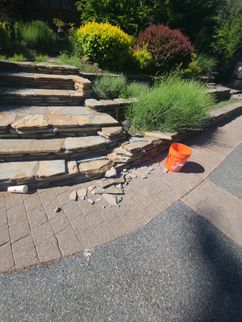







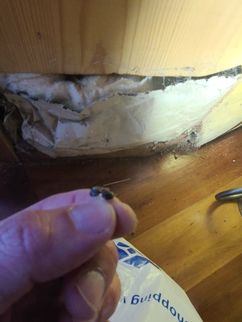


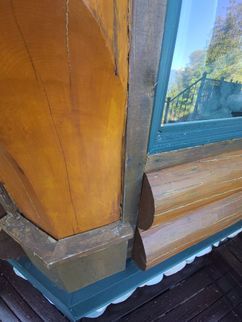





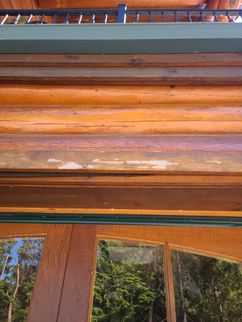

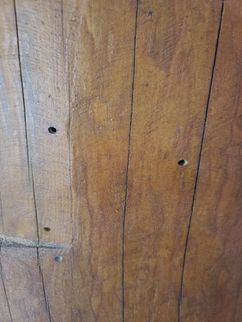





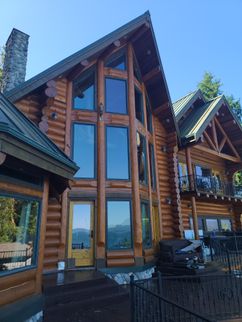


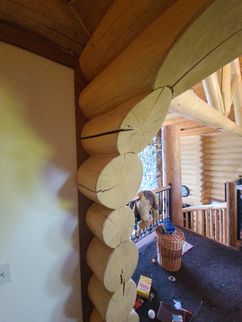
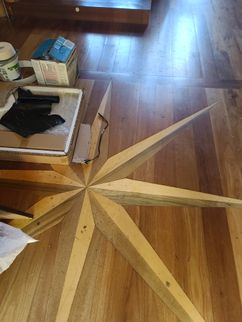




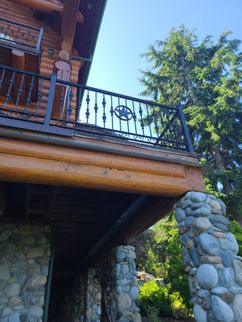





















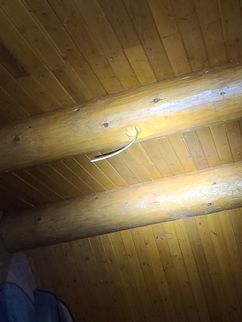


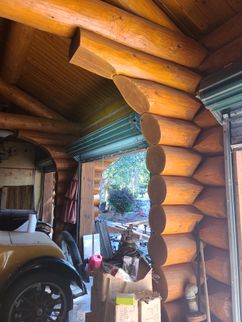




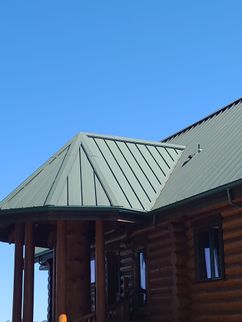





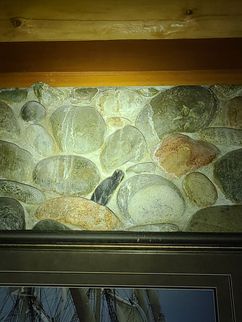
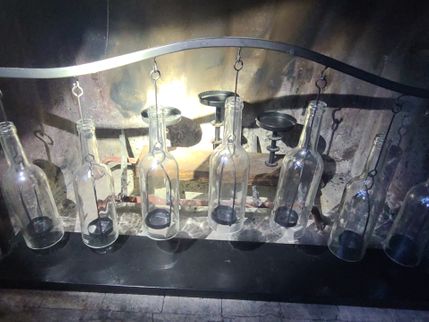














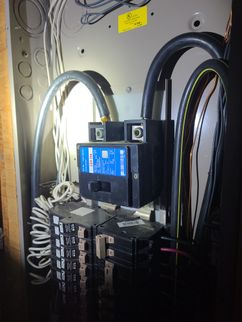

.jpg)




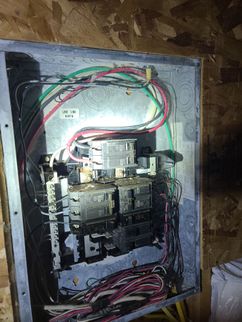





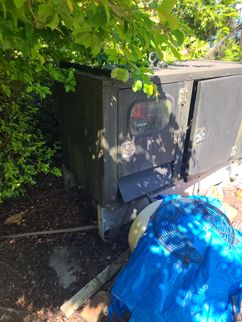

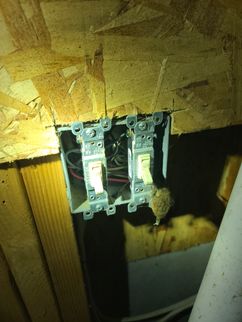

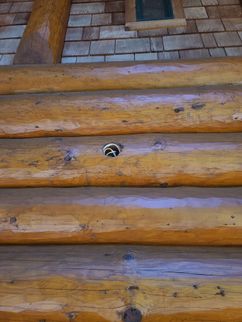













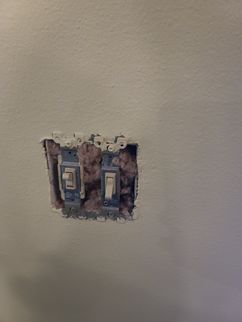


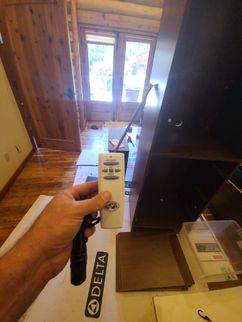




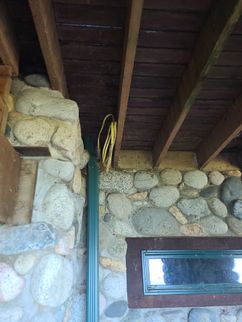







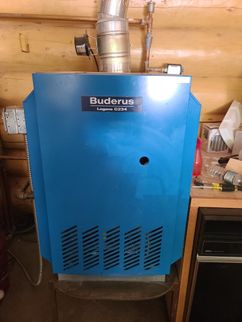


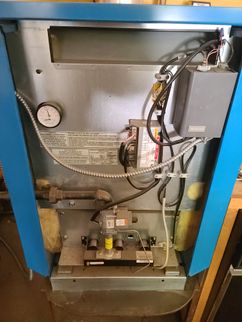
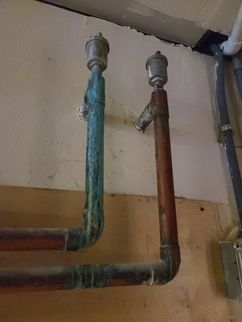



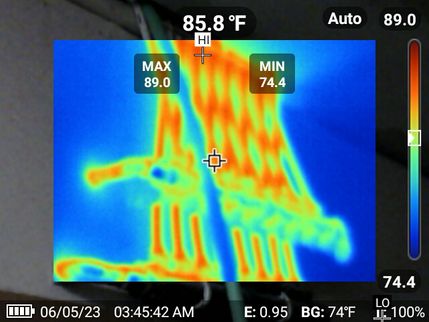
















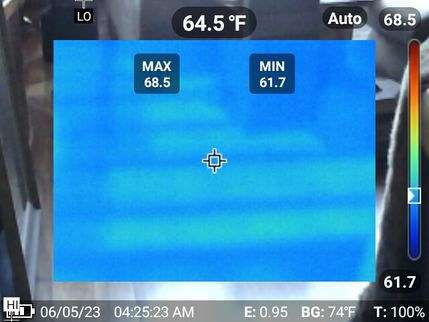
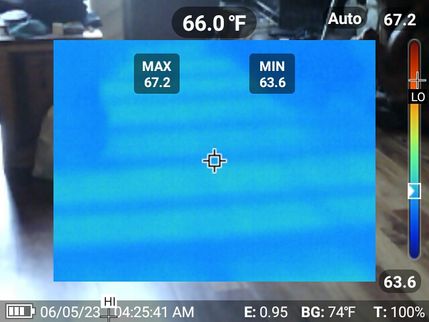







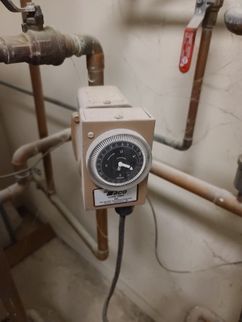



 (1) (1).jpg)

 (1).jpg)

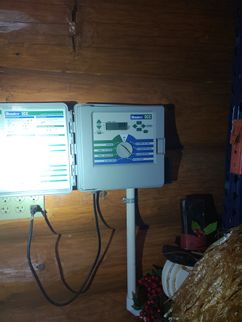








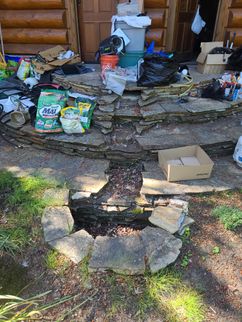





















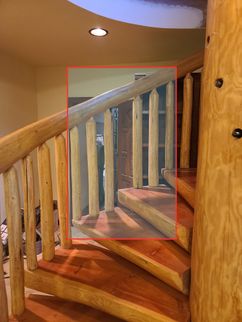

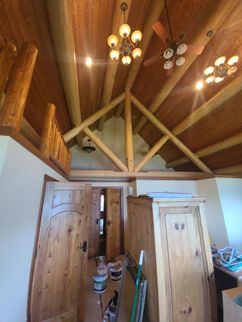
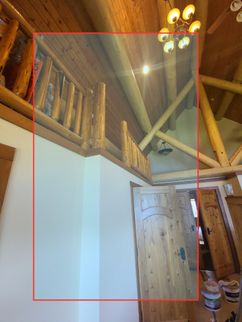


 (1).jpg)
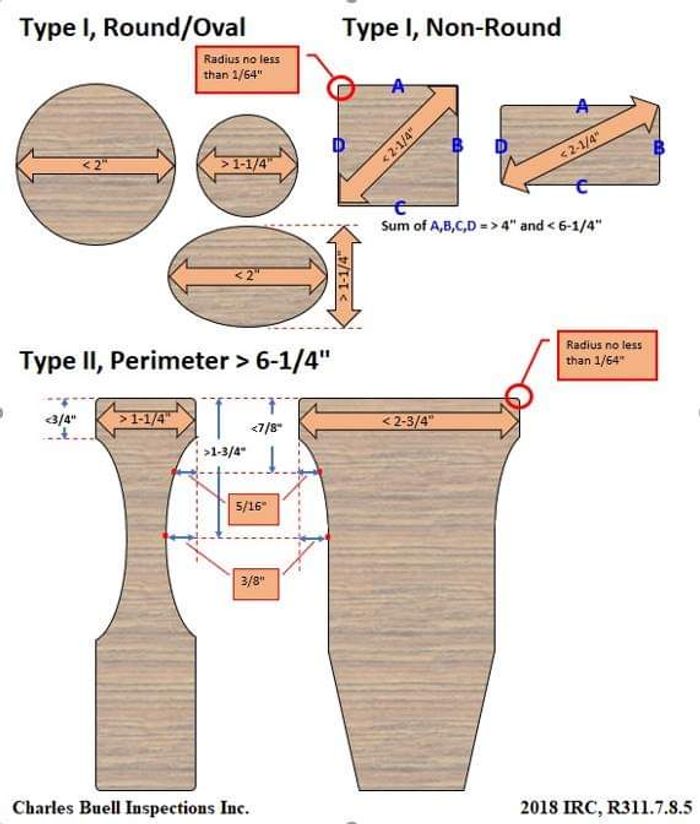

.jpg)

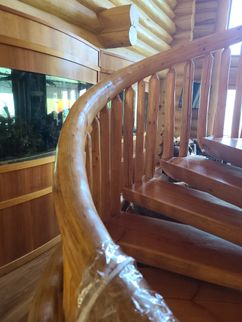






.jpg)
.jpg)







.png)
.png)


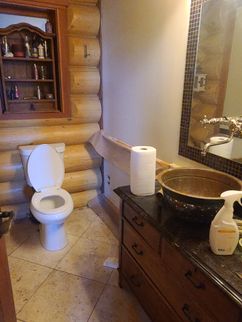





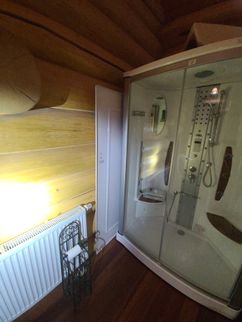





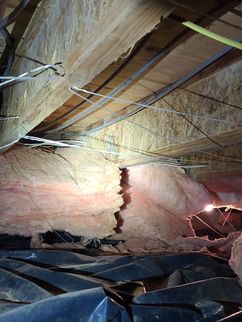














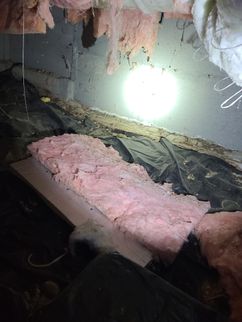


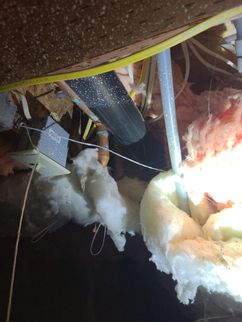

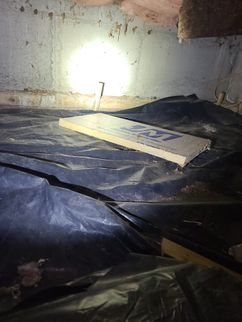














.png)

